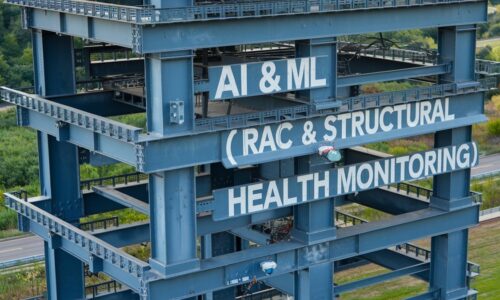Structural Health Monitoring (SHM) of bridges is essential for ensuring their sustainability, reliability, and longevity. Bridges, as critical infrastructure, play a vital role in transportation. However, the impact of service loads and other stresses can cause damage, necessitating effective health monitoring and assessment. One of the types of health monitoring used in past was visual inspection methods, but they consume a lot of time, manpower and were mostly subjective. SHM techniques have since emerged to detect and evaluate structural damage based on the properties of the structure and sensor data, providing a more accurate representation of the bridge’s condition.
SHM methods are categorized into two main approaches: model-based and data-driven. Model-based methods utilize finite element modeling to detect damage, while data-driven methods rely on sensors to capture the dynamic behavior of structures. With advancements in data processing techniques, data-driven methods have become more advantageous, utilizing feature extraction and selection methods to detect damage. Signal processing techniques, such as Fast Fourier Transform, Wavelet Packet Transform, and Hilbert-Huang Transform, analyze vibration data collected from sensors to identify structural issues.
Despite the benefits, current SHM techniques face significant limitations, particularly in spatial resolution and sensor density. Sensor arrays, including LVDTs, accelerometers, GPS, and temperature measuring devices, often fail to provide sufficiently high-resolution data for large and complex structures like long-span bridges and high-rise buildings. This limitation hinders precise damage localization and characterization. Additionally, optimizing sensor placement remains a critical challenge, as the lack of systematic methodologies for determining strategic sensor locations can lead to inefficient resource use and inadequate data capture. Misplaced sensors can result in inappropriate and ineffective data. Furthermore, setting appropriate damage detection thresholds is challenging, as it is essential to define precise thresholds without generating excessive false positives or negatives.
This research focuses on advancing SHM techniques, with significant potential for application within Pakistan. Over the past two decades, Pakistan has experienced rapid infrastructure growth, but the practices for monitoring the health of highway bridges, subject to continuous dynamic loads, have not kept pace. Consequently, there is an urgent need for developing efficient monitoring approaches to manage the growing inventory of bridges. Current local inspection methods are inefficient and labor-intensive, highlighting the need to integrate advanced sensor technologies and automation into civil engineering practices. This research aims to develop improved health monitoring techniques and explore more effective procedures for bridge inventory management.
The objectives of this research are:
- To construct a prototype bridge and validate the integrated SHM system for real-time monitoring and health assessment of bridge structures.
- To integrate innovative sensors into the SHM system for accurate data acquisition.
- To establish a continuous data-gathering mechanism with SHM equipment on the prototype bridge.
- To develop an integrated solution leveraging SHM and machine learning techniques.
To implement the research methodology, R.C. bridge was constructed in backyard of NUST Institute of Civil Engineering department under supervision of P.I. Dr. Usman Hassan, Dr. Ather Ali, Research Assistants Hamza Ahsan Abdullah and Janita Mahnoor Shahid. The bridge spanning 21’ was constructed with concrete strength of 3000 psi and steel reinforcement yielding limit of 60,000 psi. The detail of bridge and sensors placements are as follows:

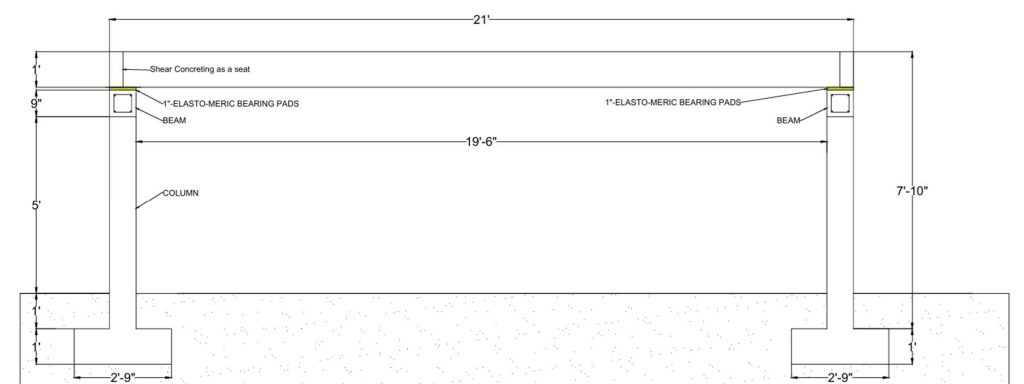
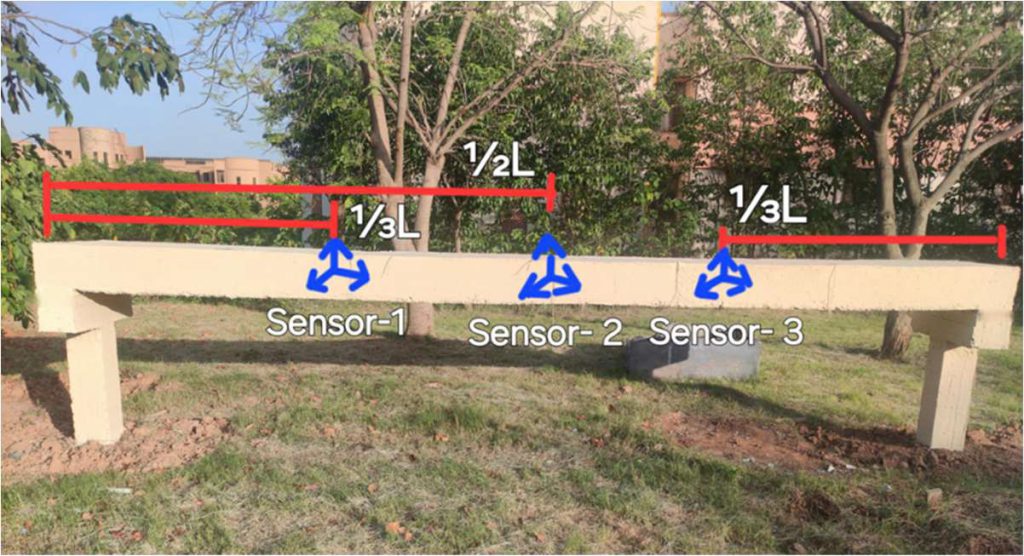
Different sensors including temperature sensors, humidity sensors, ultrasonic pulse meter and accelerometers are installed in bridge for effective SHM. The DHT11 sensor is utilized to measure temperature and humidity at each third of the bridge, having a temperature capacity range of 0°C to 50°C, with ±2°C accuracy and humidity range of 20% to 90% RH, with an accuracy of ±5% RH, this help in assessing the real-time condition of the structure. And HC-SR04 sensor is used in this research for ultrasonic pulse readings. This sensor emits ultrasonic waves reading by using piezoelectric transducer and help to detect internal cracks within concrete. By measuring the distance to these cracks, the HC-SR04 sensor provides essential data for evaluating structural integrity.
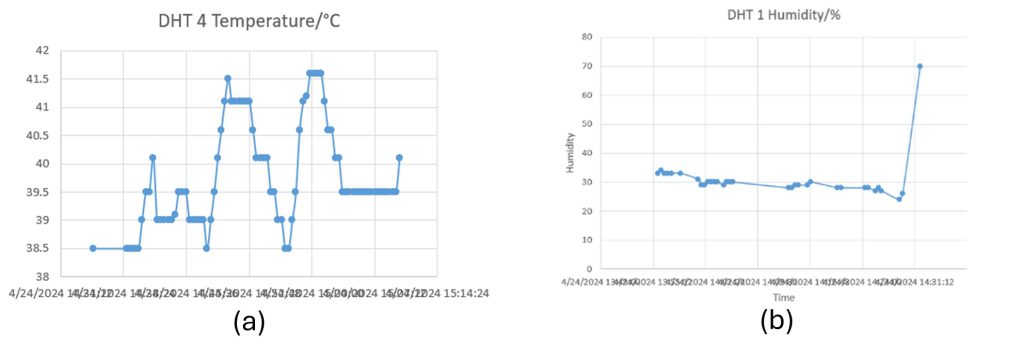
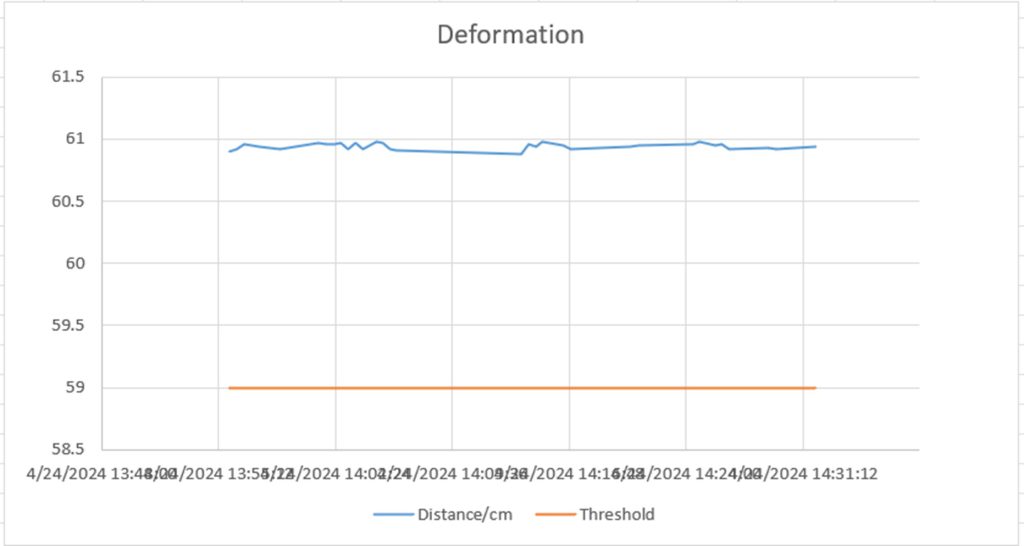
The real-time monitoring of bridge was done using the results of FFT. As any deviation in the reading of frequency at day 1 and monitoring date indicate the damage. For reference the FFT results of accelerometer 1 at day 1 and day 9 of monitoring are shown as follows:
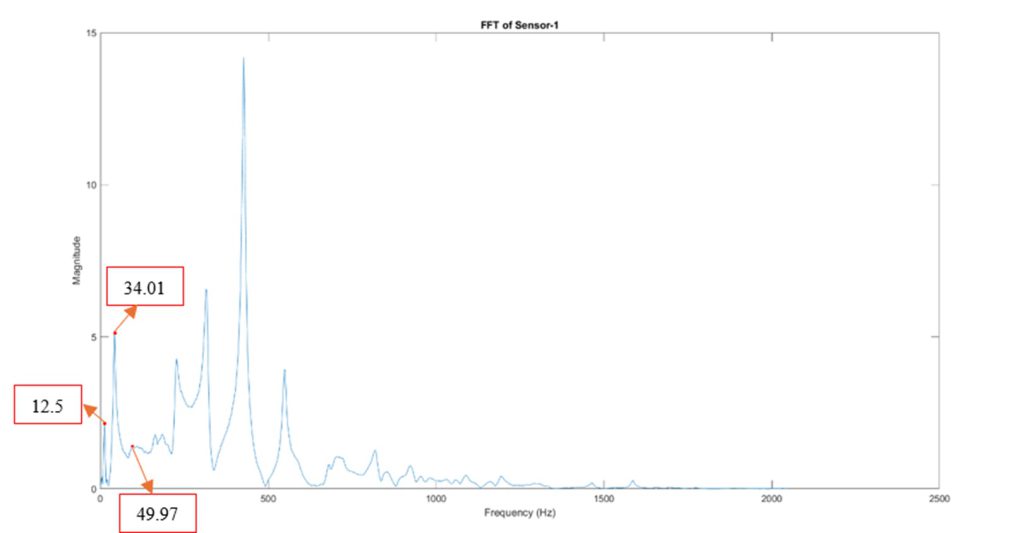
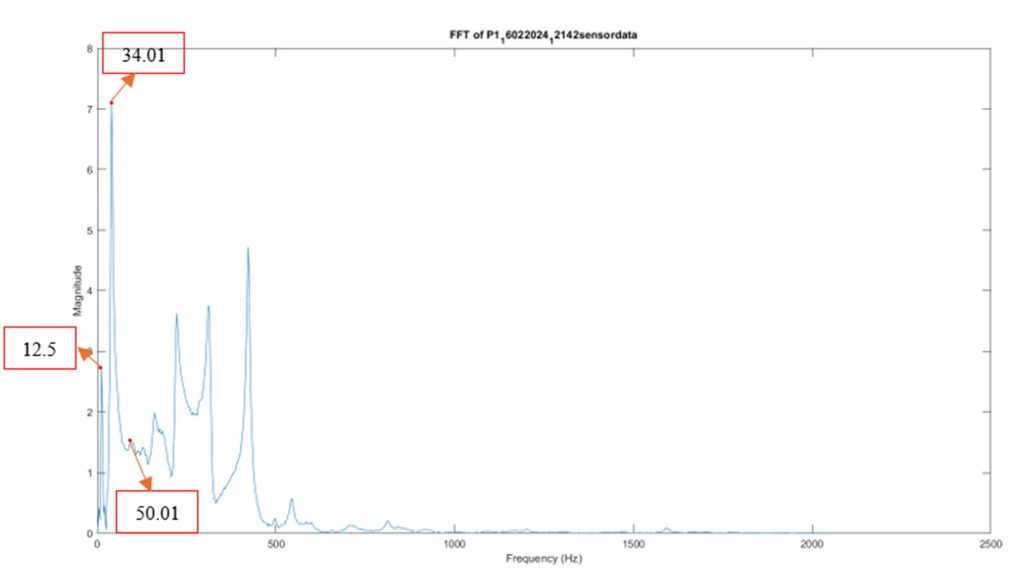
These findings underscore the potential of this approach to accurately integrate the sensor with the SHM techniques for effective damage detection. As currently no external damage was induced in the structure, it can be clearly seen from proposed methodology as well, no damage is detected by ultrasonic sensor and FFT results. This makes the proposed methodology fully applicable for real-time health monitoring. This research marks a significant advancement in the field of structural health monitoring by providing a robust, reliable, and scalable solution that can be applied to various types of bridge structures, ensuring their safety and integrity in the face of diverse and challenging operational environments. And as Pakistan is a developing country, the application of this methodology on existing bridge structures save economy and improve sustainability.
Research Team:
- Dr. Usman Hassan
- Dr. Ather Ali
- Dr. Usman Hanif
- Dr. Shaukat Ali khan
- Hamza Ahsan Abdullah
- Janita Mahnoor Shahid
The author is an Assistant Professor, at Institute of Civil Engineering, National University of Sciences and Technology (NUST), Pakistan. He can be reached at usman.hassan@nice.nust.edu.pk.
Research Profile: https://bit.ly/45TpVjr

![]()



